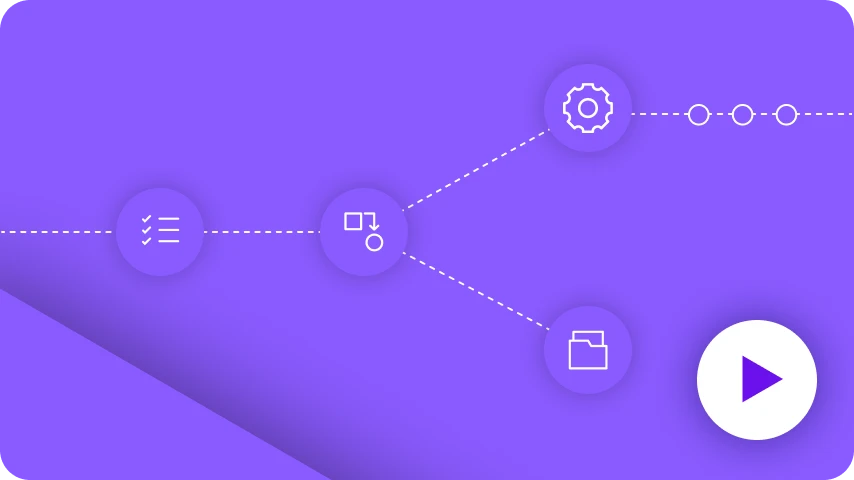
Veja como a abordagem “tudo em um” contemporânea da Digibee desbloqueia integrações modernas, especialmente quando comparada às plataformas legadas tradicionais.

Veja como a abordagem “tudo em um” contemporânea da Digibee desbloqueia integrações modernas, especialmente quando comparada às plataformas legadas tradicionais.
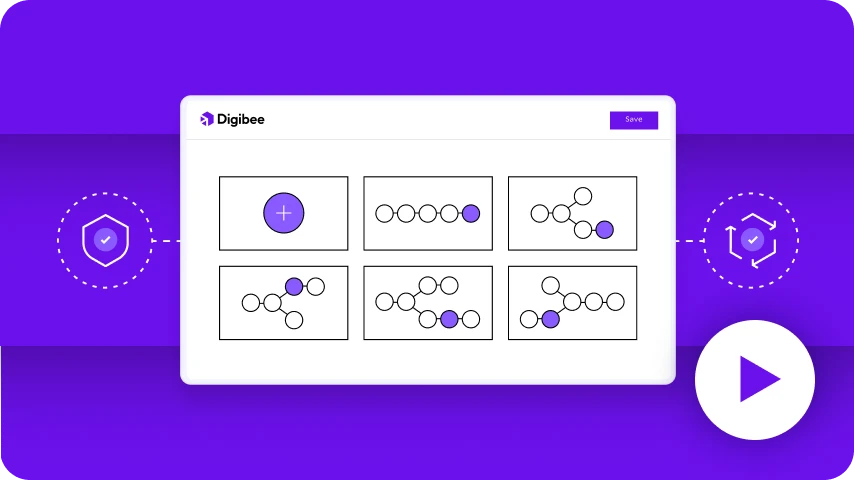
EVENTO: Workshops de Fundações da Digibee
QUANDO: Os inscritos serão avisados das próximas turmas.
ONDE: On-line
COMO ENROLAR: Inscreva-se aqui através Digibee Academy
O Foundations Workshop da Digibee é uma iniciativa que visa ampliar o conhecimento de nossos usuários em contextos de integração mais complexos, como desafios internos de TI ou desafios externos com parceiros do seu ecossistema de negócios.
Durante este treinamento introdutório ministrado por instrutor, os clientes podem se familiarizar com os conceitos fundamentais da Plataforma de Integração Digibee: construa seu primeiro pipeline e implante sua primeira integração durante a aula. Esta sessão de 3 horas permite aos utilizadores adquirir conhecimentos práticos e estar mais preparados para desenvolver a sua integração pipelines.

Leitura obrigatória para líderes de TI: o Gartner discute como alinhar com eficiência suas necessidades de integração e analisa os prós e os contras dos modelos de precificação comuns.
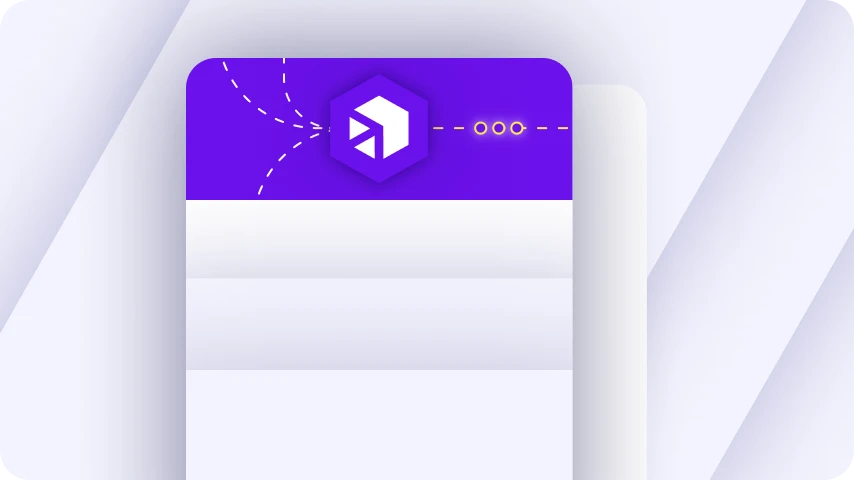
Preocupado com o próximo fim da vida útil do MuleSoft? A Digibee detalha três diferenciais principais para apoiar seus esforços de transformação digital.
Mergulhe nos três principais elementos e diferenças entre as duas empresas iPaaS – preço, pessoas e produtividade com este white paper esclarecedor, Baixe agora.

Neste episódio de “Integração. Redesenhado.”, nosso anfitrião, Diretor de Marketing da Digibee Cait Porte, conversa com o chefe de educação e IA da Digibee, Fabricio Inocencio, para discutir o emocionante mundo da educação continuada para a Digibee – incluindo a própria Academia de aprendizagem da Digibee. Fabricio compartilha sua paixão por fornecer conteúdo útil e uma experiência de aprendizado amigável para os usuários, focada principalmente em capacitar os desenvolvedores. Seu trabalho consiste em avaliar como fornecer conteúdo útil para nossos clientes, como fornecer uma experiência amigável e favorável e como aumentar nossa adoção e comunidade.
Mais sobre este assunto
Digibee Academy
Nossas Digibee Academy está disponível para todos os clientes e fornece as melhores ferramentas para dominar nossa Plataforma de Integração.
Suporte ao Cliente
A Digibee capacita seus clientes a alcançarem a autossuficiência por meio de uma robusta agenda de educação continuada.
Integração que fortalece
Integração mais fácil por meio da equipe dedicada de sucesso do cliente da Digibee, que capacita os desenvolvedores por meio de integração, suporte e treinamento.
CAIT PORTE:
Olá e bem-vindo à Integração. Redesenhado. Eu sou seu anfitrião, Cait Porte. E neste episódio estou acompanhado de Fabricio, chefe de educação aqui da Digibee.
Bem-vindo, Fabrício.
FABRICIO INOCÊNCIO:
Obrigado, Cait. Obrigado por me receber aqui.
CAIT PORTE:
Estou muito animado com este tópico hoje. Então, o que significa ser chefe de educação? O que isso significa para você?
FABRICIO INOCÊNCIO:
Posso dividir meu trabalho em três grupos. A primeira é como podemos entregar conteúdo útil para nossos usuários ao usar a plataforma? Então tudo relacionado a conteúdo de desenvolvimento, cursos, tutoriais e tudo relacionado a isso. Um segundo, está relacionado à experiência de aprendizagem. Como podemos oferecer uma experiência de usuário útil e amigável e, principalmente, uma experiência de aprendizado que pode tornar seu trabalho de aprendizagem mais fácil. O terceiro está mais relacionado à adoção do usuário. Como podemos fazer crescer a nossa comunidade para atrair mais utilizadores e fomentar o envolvimento para utilizar os recursos que lhes oferecemos?
CAIT PORTE:
Acho que é muito importante quando pensamos sobre o tipo específico de pessoas que visamos com a plataforma, que são os desenvolvedores, como os atendemos? Certo? E por isso, quando falamos de educação, é muito importante que as pessoas compreendam não só o trabalho que estão a fazer, mas também as ferramentas que estão a ser utilizadas. Então, pensando bem, trouxemos você para ajudar a redesenhar a experiência educacional do Digibee. Como você fez isso? Certo. Como você pensou em redefinir e redesenhar a experiência educacional da Digibee?
FABRICIO INOCÊNCIO:
Perfeito. Pergunta interessante, Cait. E começamos pelo começo que é um usuário diferente. Então se a gente vê os recursos educacionais em geral, a gente colocava a educação como fim. As pessoas estudam para obter uma certificação e depois fazem outra coisa com isso. Na verdade, queremos ajudar nossos usuários a utilizar a plataforma, não necessariamente para obter uma certificação. Portanto, neste caso, a educação é mais um meio do que um fim.
E há algumas implicações que precisamos levar em consideração. Por exemplo, não queremos medir quanto tempo eles passam na plataforma, na verdade na plataforma, quero dizer, na plataforma de aprendizagem. Na verdade, queremos que eles usem a plataforma Digibee. E a plataforma de aprendizagem é apenas um recurso para eles ajudarem a não ficarem presos ou a desenvolverem suas habilidades usando a plataforma. Então estamos pensando em algumas estratégias que estamos usando.
Estamos usando a abordagem mais “just in time” em vez de “just in case”. Por exemplo, não fornecemos muito conteúdo para eles, caso possam usar. Na verdade, isso deveria ser mais justo a tempo. E precisamos levar em consideração conceitos como carga cognitiva, atenção limitada e coisas que queremos implementar para proporcionar uma melhor experiência de aprendizagem para eles.
CAIT PORTE:
Quando conversamos anteriormente, você mencionou que a seleção da plataforma era muito ditada por nossa base de usuários e você mencionou essas coisas antes. Pensando na diferença entre o tipo de envolvimento de um aluno-professor e o aprendizado individualizado para desenvolvedores e pessoas que aprendem a plataforma. Para que o resultado final, como você estava dizendo, não fosse apenas um certificado, mas fosse mais “Quero usar esta plataforma continuamente e como encontro as informações quando preciso” versus tudo de uma vez para isso certificação.
Como você mediu o impacto do sucesso que vimos na plataforma? Porque parece que a mudança foi bem-sucedida. Mas como você verá o sucesso em termos de métricas?
FABRICIO INOCÊNCIO:
Ah, perfeito. E é interessante porque no contexto que você trouxe de como os usuários aprendem, precisamos levar em consideração que podemos ter usuários que estão usando a plataforma de forma linear, aprendendo coisas do zero e de forma não linear que eles podem usar a plataforma o que precisarem. Portanto, precisávamos pensar nossas métricas de forma que pudéssemos medir até que ponto a plataforma de aprendizagem foi útil para eles, considerando essas múltiplas abordagens.
Então, uma primeira métrica que implementamos é claro, os novos usuários, quantos novos usuários estamos trazendo para a plataforma, dando espaço ao nosso cliente. E isso nos ajuda a entender como estamos criando a consciência e a atratividade da plataforma para eles. E uma vez lá, medimos a aderência do usuário, certo? Então comparamos usuários ativos diariamente com usuários ativos mensalmente porque entendemos que se eles acessam a plataforma com frequência, provavelmente estamos ajudando eles no dia a dia. Portanto, é mais uma abordagem de aprendizagem ao longo da vida, é uma abordagem de base contínua. Não é uma coisa que começa e tem fim, é um processo. Portanto, precisamos fornecer recursos que possam ajudá-los em uma jornada, e não em algo que terá um fim.
E, finalmente, e este é o mais desafiador, como podemos medir a eficácia da aprendizagem? E não é necessariamente por classificação, certo? Não é necessariamente para ver essas notas. E descobrimos como o aprendizado poderia ser útil? Se o aprendizado for útil para eles, eles estão usando a plataforma por conta própria. Então medimos pipeline, como eles estão usando e criando integração pipelines na plataforma por conta própria, sem ajuda. Então é isso que chamamos de métrica de autossuficiência para como eles são totalmente autônomos no uso da plataforma. E nós medimos e você entende os co-anfitriões que estão usando a plataforma e como eles estão progredindo na implantação de novos pipelines sem qualquer ajuda.
CAIT PORTE:
Acho que para quem está ouvindo e pensando em implementar uma plataforma educacional, no geral é útil não olhar apenas para “ei, quantas pessoas usam a plataforma e quantas pessoas fizeram cursos, concluíram atividades ou pesquisaram conteúdo?” Mas você está vendo uma melhoria na quantidade de alguém que usa seu produto ou serviço como resultado de uma melhor educação e melhores ferramentas para apoiar os usuários? Então, eu adoro isso. Essa é uma área em que estamos focados.
Quando pensamos em licenciar software com base na experiência da Digibee e na sua experiência anterior, qual é o maior impacto de ter uma experiência educacional como a nossa quando você está licenciando software?
FABRICIO INOCÊNCIO:
Perfeito. Acho que todo time de produto visa fomentar a adoção, né, a adoção do produto e no nosso caso, do software. E não saber usar o software é um grande atrito para essa adoção. Certo. E existem diferentes curvas de aprendizado que os usuários podem superar essa curva de aprendizado para começar a crescer em suas habilidades no uso de qualquer plataforma ou produto de software ou principalmente produto digital. Então nesse sentido podemos pensar que um time de produto, se tiver oferecendo um software que seja fácil de usar e não seja complexo, seja muito simples de usar, talvez um programa de onboarding possa ser suficiente para ajudar esses usuários a superar esse aprendizado curva para que possam explorar todas as funcionalidades desse software.
Mas no nosso caso, apesar de sermos um low code plataforma e é uma plataforma fácil de usar, há muitos recursos, há muitas complexidades que podem ser resolvidas usando a plataforma. Portanto, os recursos de aprendizagem são muito importantes para ajudar os usuários a passar por essa curva de aprendizado o mais rápido possível para utilizar todas as capacidades que o software pode oferecer.
CAIT PORTE:
Muito bem dito. Quais são algumas de suas experiências educacionais favoritas? Eu conheço a minha, estávamos conversando sobre isso, mas eu mesmo dou aulas em meio período, então estou familiarizado com várias plataformas, mas conversamos sobre muitas. Quais são alguns dos seus favoritos?
FABRICIO INOCÊNCIO:
Nesse caso, por estarmos focados em entregar uma plataforma individualizada, gosto muito das plataformas que conseguem agregar muitos recursos tecnológicos para interatividade e uma forma de tentar replicar ao máximo o relacionamento que os alunos podem ter com um instrutor.
Então, neste caso, nos inspiramos em algumas plataformas de ad tech da indústria educacional, por exemplo, Pluralsight e Code Academy, que focam mais na tecnologia em geral e também DataCamp e Dataquest que focam mais no ensino de ciência de dados. E são plataformas realmente interessantes, que fornecem recursos relacionados à interatividade, ao vivo, autoavaliação ou feedback que podem fornecer esse ritmo individualizado para o aluno, mas também o início da trilha do Salesforce. Aquela forma interessante de organizar o conteúdo com alguns recursos de gamificação que estamos nos inspirando também. Então acho que esses são cinco exemplos interessantes que posso mencionar.
CAIT PORTE:
Eles são tão bons e seríamos negligentes se não mencionássemos coisas como Salesforce e acho que plataformas como Google para Google Analytics e outros treinamentos que eles possuem. Quero dizer, há uma riqueza de conhecimento por aí e agrupá-lo entre essas plataformas tem sido inspirador de assistir.
Fabricio, muito obrigado por se juntar a mim hoje. Valorizamos muito ter a educação na vanguarda do que fazemos aqui na Digibee.
Foi um prazer e tenho certeza de que teremos você de volta para mais, à medida que começarmos a trabalhar em mais educação que compartilhamos. É isso neste episódio de Integração. Redesenhado. Vejo você na próxima vez.egration. Redesigned. See you next time.
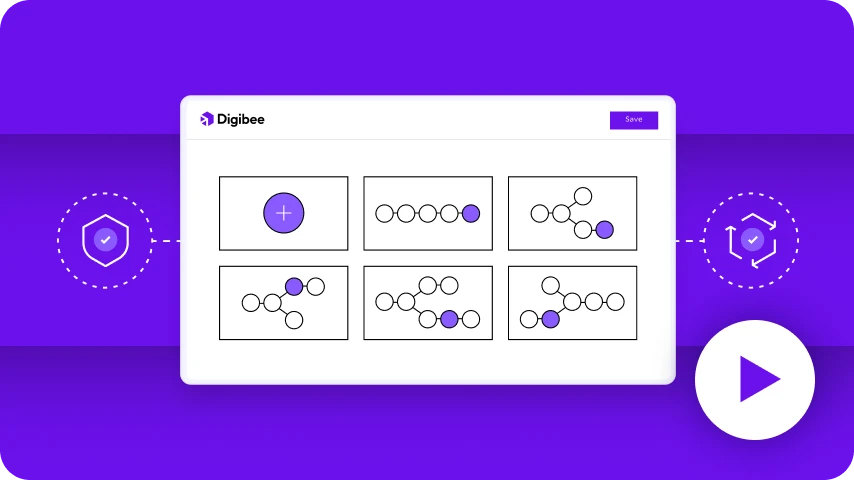
Saiba como o iPaaS da Digibee está mudando a maneira como o mundo pensa sobre integrações – transformando processos e maximizando o trabalho inovador dos desenvolvedores.
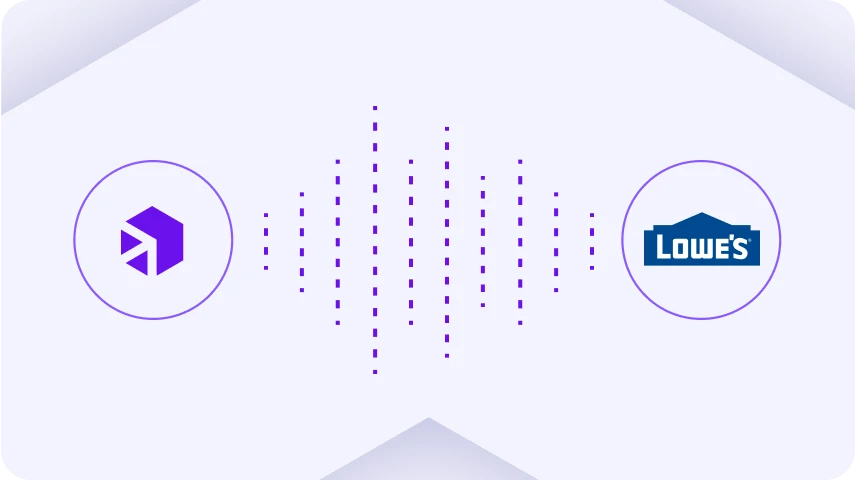
Entrevista com Duncan McFadden, suporte de plataforma empresarial para ServiceNow na Lowe’s, discutindo como o iPaaS da Digibee transformou sua logística de remessa.
Neste episódio de “Integração. Redesenhado.”, nosso anfitrião, Diretor de Marketing da Digibee Cait Porte, entrevistou Duncan McFadden, suporte de plataforma empresarial para ServiceNow na Lowe’s (às vezes chamado incorretamente de Lowes), para discutir como o iPaaS da Digibee transformou sua logística de remessa. Ao fazer parceria com a Digibee e implementar uma solução moderna de integração de remessas, a Lowe’s viu melhorias no monitoramento de erros, registro e notificações por e-mail, resultando em melhor desempenho geral e redução de esforços manuais. Duncan também expressou sua intenção de utilizar o Digibee para projetos futuros, especialmente em estoque e gerenciamento de ativos, que são aspectos cruciais das operações da Lowe.
Mais sobre este assunto
Diminua as incertezas com integração inteligentes
Este guia rápido para empresas de varejo destaca como a plataforma da Digibee ajuda os clientes a mitigar os riscos da cadeia de suprimentos e das operações, melhorando as integrações com clientes e fornecedores.
Atraente Estudos de Caso
Nossos clientes vivenciam a transformação digital até 70% mais rápida e com menos custos. Esses estudos de caso atraentes destacam como conduzimos nossos clientes a soluções eficientes e bem-sucedidas.
Compreendendo o iPaaS
Guia útil para entender o que é uma plataforma de integração como serviço (iPaaS): como funcionam, o que fazem e os benefícios. Embora os casos de uso e os benefícios do iPaaS sejam atraentes, nem todas as soluções iPaaS são iguais.
CAIT PORTE:
Hello and welcome back to integration. Redesigned. I’m your host, Cait Porte, and in this episode,I am joined by Duncan from Lowe’s. Duncan, welcome.
DUNCAN McFADDEN:
Thank you, guys.
CAIT PORTE:
Duncan, we’ve worked together now with Lowe’s for a little while. Why don’t you tell everybody what your role there is over at Lowe’s?
DUNCAN McFADDEN:
So. My name is Duncan McFadden. I handle enterprise platform support for ServiceNow. I’ve been doing it for roughly four to five years now. Whether it’s been from just handling enhancements and defects to now more handling the actual platform itself from like, license structure, platform upgrades, and all that kind of support.
CAIT PORTE:
So Duncan, thank you for joining us. Tell me what prompted Lowe’s, when you think about how Lowe’s is working with ServiceNow and integration, but what prompted you to look for an integration solution?
DUNCAN McFADDEN:
So at the time, we were just about to start working a defect related to all of our shipping integrations, where a lot of stuff was just getting like, random errors. At the time, we weren’t really logging anything just because we had nothing really set up from IT, at least from that background. Honestly, we weren’t really looking for an integration solution. It just happened to be due to the friendship of other individuals that they started working for Digibee. And we were able to look at that solution holistically and start to work something together.
CAIT PORTE:
So tell me a little bit more about this shipping situation. We know that Lowe’s provides amazing customer service. I’m a Lowe’s customer. There’s one around the corner that I hate to admit that I frequent so often. We’re always doing home projects, but when you think about this from a consumer standpoint, obviously we care about shipping notifications, but was there an impact to consumer behavior here or was this primarily internal logistics? What was going on?
DUNCAN McFADDEN:
So this would be just internal logistics. Related to movement of IT equipment. So when you think about, let’s say, like, the phones, like, your signature captures that obviously you’re doing your payment methods through, any of those kind of items where we’re moving stuff. It’s a different FedEx account than what you’d see from like a consumer level. So, we’re just not sure if there was like a disconnect there. But we were using kind of like. An old version of their integrations, which was like soap based. Granted, again, it was built in 2017, but obviously Digibee was able to help us move to a more modern solution of the shipping integration.
CAIT PORTE:
It’s interesting to hear 2017 referenced as, like, a long time ago, but you think about technology changing every day and new things coming out. We want to have our companies on the latest and greatest of technologies without the legacy holding us back. When you think about before and after and what the outcome was in using Digibee to power these integrations, what are you seeing now as a result of that implementation?
DUNCAN McFADDEN:
So, I think in the past we could say there was at least a 5% to 10% plus disconnect when it comes to sometimes showing like delivered statuses. Sometimes, I mean, the status would not even show anything. It would just show that the tracking was just sitting there, doing nothing. One, we’re seeing those, from like a logging perspective a lot better, because obviously you can see logs tremendously better when it comes to Digibee’s platform. As well as making sure we know that those alerts are happening. So obviously all that stuff is being sent back to our platform and we’re able to see some of that stuff through email notifications. It does seem that we’re getting a better, or at least a lower rate, of issues. I would still say there’s probably like a 2% when it comes to – but I want to say this is more like a FedEx-related question. But yeah, it’s definitely working a lot better. Again, obviously to speed to market of not having to do some of these extra logging tables and doing some of that extra work just to be done from our side was nice. And yeah, I mean, the tool is really easy to show someone what’s going on.
CAIT PORTE:
I love there were two things that you referenced there. One of the things that we talk about is the ability to drive down your backlog. So Duncan, has there been anything that you’ve been able to see as an output now that you’re no longer worried about this shipping situation where, “hey, yeah, those notifications are going out, we’re not seeing as many errors. I don’t have to react to feedback or questions or monitoring or issues.”
Is there anything now that you’re able to get to as a result? Has that been something that’s come as a result?
DUNCAN McFADDEN:
Yes! So, while we were working this with you guys, I was actually doing some other enhancements when it came to some parts of shipping and receiving. And I guess an example would be at the time someone had to manually receive stuff, right. Because we’re concerned with obviously that delivered status being correct at the time with the old integration. So, someone was manually receiving product to actually show the movement of assets to the stores. So, obviously this is more like a holistic asset management approach. But, with that, right, now that we know that the delivered
status is a little bit more refined and able to be known that it’s correct, we moved everything to be back to automatic receiving. So, obviously you’re taking – I think we took about three users off of manually receiving stuff. When you look at the hours of time spent per year, something like they were wasting probably like $15K-$18K on it per year. I mean, granted, this is just hour based, but that alone, right? I mean, that speaks volumes. How quick – while you guys were doing the integration, I’m obviously doing other work and we’re able to just push out more stuff together that way.
CAIT PORTE:
Yeah, I’ve talked about this a lot on the podcast is my background is in product and product management, and so I have a soft spot for the ability to get more work done, particularly for development, because you can then say, “hey, we’re going to focus on these really crucial, more innovative things, so that’s because we have this ability unlocked,” right? So it’s not to say you no longer need those three individuals or that your time is no longer needed related to this integration, you just can now focus those resources on other more crucial things. It sounds like.
You also mentioned that the platform allows for more visibility. Can you tell me about what you’re showing and who you’re showing it to? You referenced that earlier.
DUNCAN McFADDEN:
Yeah. So currently it’s really more like a reference point to only me and one other individual, but it’s more just being able to see those logs. With a lot of your more traditional, say, like, platforms as a service, you’re not going to have that much built when it comes to logging, out of the box. Without having to really stand up a good enterprise logging solution at that point. And then obviously, you run into a lot of factors of how big those tables become? How do we make sure security around some
of that stuff? So, actually just having it within Digibee and being able to see it easily and quickly for whatever request I want to look at does make things a lot easier. Right? Because obviously we know where the errors are. They’re going to be bucketed to wherever they are, and then we can just work to fix those issues really quickly.
CAIT PORTE:
Duncan, you’re referencing a number of things that we’ve talked about.
Has the ability or the usage of Digibee now highlighted, “hey, I can use this in other areas?” Are there things where you’re saying, “hey, there’s this opportunity that exists at Lowe’s, or I see this challenge, or this problem, or this service is falling down where I can now insert Digibee?”
And maybe you can talk a little bit about what you’ve seen as a result of the ease of use that we’ve talked about so far.
DUNCAN McFADDEN:
Oh, definitely! From our side, right, we’re just kind of on a hold when it comes to some integrations. But, I definitely will be using Digibee for the future. I could definitely say we’re going to be working on a pretty big project here soon related to some other kind of forms of inventory and asset management. But, when you think about inventory and asset management, that spans very large. When it comes to Lowe’s, and I mean all companies, right, they’re going to care about their inventory and asset management a lot.
CAIT PORTE:
Inventory and asset management not only matters for the consumer, matters for the business. What do we have? How much room do we have? How do we think about what’s coming in and what’s going out? Especially when you’re talking about big physical products used for home improvement. So, all that space really matters when it comes to laying out your store, thinking about your trucking, and anything that’s getting from point A to point B being available for the consumer. So, I could imagine that there’s a ton on your plate, potentially, for how can I use this technology to improve some of that or to optimize what we’re doing today?
DUNCAN McFADDEN:
Absolutely. Yeah. There’s such small things that most people don’t think about asset management that it adds up really quickly. When you start looking at like, dollar amounts, it’s very crucial to keep it in check, I’ve learned.
CAIT PORTE:
Are you looking at a lot of the dollar amounts related to the work that you’re doing or having an impact on? Is that a part of your role?
DUNCAN McFADDEN:
It is now, yes. We are looking to kind of watch what’s the difference between efficiency gains or if we can kind of move some of our – because we track, obviously, the amount of hours for certain work – so we’re going to track against efficiency gain, whatever, like CPECs and OPECs for a lot of stuff. So, it is a very big thing to my new team. I will say that at least the ServiceNow space has moved around to different departments and now it is kind of like a bigger focus.
CAIT PORTE:
Did you look at any other iPaaS solutions as you were evaluating and trying to solve this problem?
DUNCAN McFADDEN:
I personally did not. I, again, was very trusting of the individuals that I did work with with Digibee, and did take everything from what they said. And I mean, it worked exactly as we wanted, so there’s really no real reason to look for a different solution at the time.
CAIT PORTE:
Well, we love to hear that, right? We’re very happy that Digibee is having an impact on what you’re doing at the business. Duncan, thank you so much for spending time with me today.
For everyone joining us, thank you so much for joining. It’s been a pleasure. Again, my name is Cait. This is integration. Redesigned. Brought to you by Digibee. And thanks for joining me.
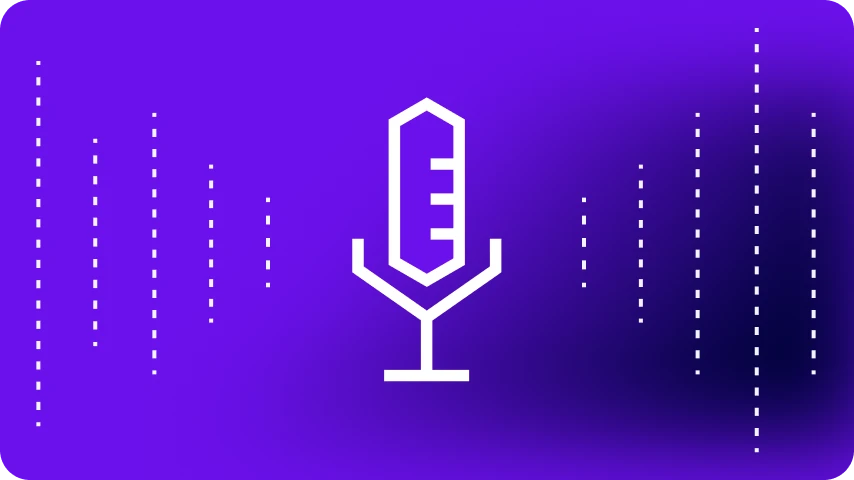
Entrevista com o especialista Brad Steele, da Thought Machine, que fornece informações sobre o gerenciamento eficaz de parcerias e a criação de ambientes de trabalho positivos.

Digibee pesquisado mais de mil profissionais de TI corporativos para fornecer insights sobre seus padrões de integração, desafios e oportunidades. Aqui está o que encontramos.
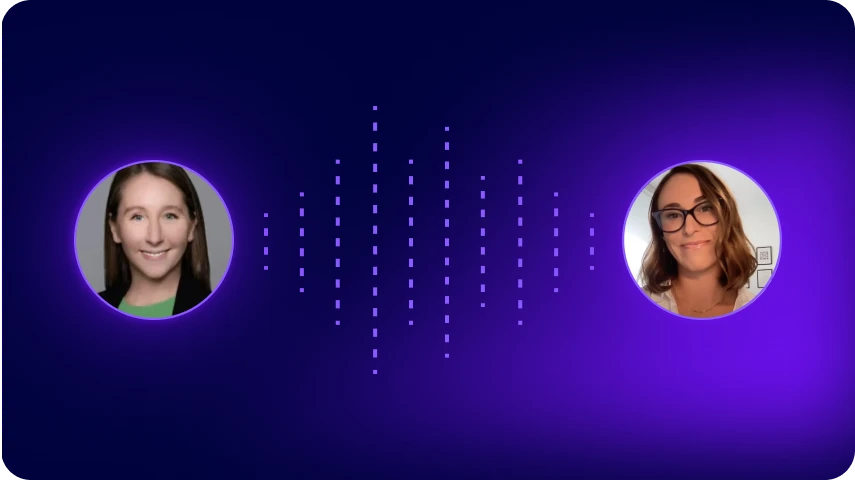
Discussão com um membro da equipe de vendas destacando os desafios que os departamentos de TI enfrentam em sua jornada para a integração e a abordagem centrada nas pessoas da Digibee.
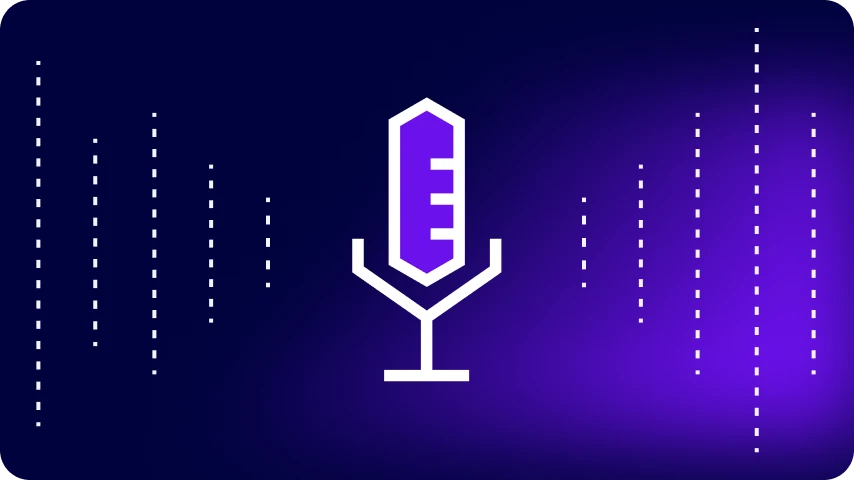
Com anfitrião Cait Porte, Diretor de Marketing da Digibee
Neste episódio de “Integração. Redesenhado.”, nosso anfitrião, Diretor de Marketing da Digibee Cait Porte, é acompanhado pelo Diretor de Tecnologia de Campo para a América Latina, Andre Campos, para uma discussão explorando os departamentos de TI. Cait e Andre abordam tópicos que incluem como os departamentos de TI evoluíram, como foram construídos, as percepções atuais em torno deles, os desafios que enfrentam e maneiras de superar esses desafios, a importância da colaboração entre TI e outros departamentos e o papel crucial que esses departamentos podem desempenhar. para entregar valor significativo à sua empresa. Uma percepção em particular discutida é a despesa significativa da TI para as empresas enquanto a TI se esforça para demonstrar o seu valor. Cait e Andre abordam como priorizar os departamentos de TI para impulsionar os esforços de transformação digital pode se tornar uma vantagem competitiva para as empresas.
Mais sobre este assunto
CAIT PORTE:
Bem vindo de volta a mais um episódio. Eu sou Cait Porte, seu anfitrião. E hoje estamos conversando com nosso CTO da Digibee Field para a América Latina, Andre Campos. Bem-vindo, André.
ANDRÉ CAMPOS:
Olá Cait. É bom estar aqui novamente.
CAIT PORTE:
Obrigado por se juntar a nós.
Estou muito entusiasmado com o tema hoje, que é construir um departamento de TI e porque isso é visto como uma despesa tão grande para uma empresa. Acho que conheço a manchete aqui, mas estou muito feliz por ter você para falar sobre isso.
Acho que já falamos várias vezes sobre transformação digital no podcast e acho que continuaremos fazendo isso. Quando pensamos em transformação digital, é um mal necessário, como dizemos, porque temos que fazer isso – equipes e departamentos de TI e toda a tecnologia que temos disponível é relevante – e é caro e normalmente leva mais tempo do que o esperado, criando alguns frustração entre todos que trabalham em qualquer coisa relacionada à transformação digital e tentando limitar a quantidade de frustração multifuncional que acontece. Certo?
Rodrigo falou sobre como os departamentos de TI perderam um pouco de credibilidade mesmo sendo tão cruciais, agora mais do que nunca. Então, por que isso acontece em algumas empresas? Pela sua experiência e vida passada, o que você está vendo? Por que estamos vendo tanto atrito entre o mal necessário de obtê-los e onde há despesas?
ANDRÉ CAMPOS:
Acho que estamos num período de mudança. Se você voltar na história há 20 anos e pensar na história de 20 anos não é assim. Naquela época, a TI era responsável por dar suporte aos negócios e manter tudo funcionando. E cada novo projeto levava muito tempo e era difícil de implementar. Tudo era manual e era difícil atender às expectativas do negócio por causa da falta de tecnologia, da falta de entendimento. Não havia muitos parceiros para trabalharem juntos para entregar o que era esperado. E acho que a combinação de tudo criou a má reputação da TI e tem sido difícil mudar isso ao longo dos anos. Está mudando, mas estamos no meio dessa mudança.
CAIT PORTE:
Adoro isso e acho que estamos tentando mudar a maré, certo? E estamos tentando mudar essa perspectiva ou percepção da TI.
Quando pensamos sobre onde estamos, qual você vê como talvez o principal desafio que os departamentos de TI enfrentam ao tentar obter o suporte que precisam fornecer?
ANDRÉ CAMPOS:
Acho que temos que lembrar sempre que a transformação não tem a ver com tecnologia, tem a ver com pessoas. Não se trata de como a tecnologia pensará, mudará tudo, mas de como as pessoas usarão a tecnologia para mudar tudo. Eu sei que não é tão forte, mas é diferente. Então, como você vai usar a tecnologia certa, os parceiros certos, para ajudar as pessoas a mudarem seu trabalho diário? Ou ajudar as pessoas a mudarem o relacionamento que têm com seus clientes ou com os demais negócios que são parceiros? Então lidar com isso, pensar na necessidade do negócio como o centro de tudo é fundamental para mudar e acelerar a transformação digital.
CAIT PORTE:
Concordo com o fato de ter sido alvo da transformação digital no passado. Mas, para uma empresa que não vê a TI como um departamento padrão, basta dizer “sim, precisamos disso, porque…” Quando um negócio não é construído com base na tecnologia, como as empresas, na sua opinião, abordam tecnologia, transformação digital, pensando que é uma vantagem competitiva e não apenas mais uma despesa?
ANDRÉ CAMPOS:
Acho que é uma questão de seleção natural. Todas as empresas que – bem, estamos no momento em que estamos tendo mudanças no comportamento dos clientes, na relação entre empresas – então há muitas coisas que precisam ser mudadas. Então, se a empresa não encarar isso como algo que tornará o negócio melhor, mais performático para corresponder às expectativas dos clientes, será algo que os deixará para trás dos demais. Eles não querem criar um diferencial, serão apenas mais uma empresa e o cliente com certeza escolherá outro fornecedor. Então, é fundamental iniciar essa transformação.
CAIT PORTE:
Comentário interessante aí. E acho que muitas empresas enfrentam, são as pessoas, é a tecnologia? É uma mudança de mentalidade que estamos avançando? E o que afetará os resultados financeiros? Então, quando você olha para essas coisas – quero dizer, você já mencionou pessoas, você já mencionou que não pode simplesmente obter tecnologia – o que você daria como recomendação para outras equipes dizerem ei, vamos fazer com que ela tenha o melhor desempenho ? E, para entregar o máximo para a empresa?
ANDRÉ CAMPOS:
Acho que essa evolução, essa mudança está acontecendo agora. E acho que isso está acontecendo em muitas dimensões diferentes. Temos mais tecnologia disponível, então é mais fácil e rápido encontrar plataformas que possam ajudar nesse processo, encontrar bons parceiros, ajudar esses parceiros. Acho que nós, você e eu, estamos imersos em muita tecnologia. Temos smartphones, vemos Netflix e streaming e tudo mais. Podemos ter tudo mais rápido. Então, agora sabemos como a tecnologia pode nos ajudar em nossas vidas. E acho que por causa das mudanças e da necessidade de atender às expectativas dos clientes para mudar a forma como nos relacionamos com outros negócios, essa pressão está fazendo com que o negócio e os departamentos de TI trabalhem melhor juntos. Portanto, tem sido mais fácil trazer a TI do “departamento executor” para um “departamento estratégico”. Este é o momento certo para fazer isso.
E acho que a pandemia acelerou isso. Colocando TI agora por causa das restrições que tínhamos. A TI foi a parte mais importante para permitir que o negócio continuasse funcionando. E acho que conhecer melhor os negócios, ter negócios e tecnologia trabalhando juntos, essa é a mudança mais importante para passar pela transformação digital.
CAIT PORTE:
Eu estava pensando sobre isso antes. Em vidas passadas trabalhei na área de produto, e com muito sucesso – e sei que você tem formação e experiência como CIO, certo? Presumo que você concordaria com isso – no sentido de que o maior sucesso que tivemos foi quando, como equipe de produto, apresentamos uma perspectiva de negócios ao departamento de TI para dizer: “ei, este é o desafio estamos tentando resolver. Ajude-nos a descobrir como fazer isso.” Em vez de muito prescritivamente, “aqui está a solução, vá fazer isso”. E acho que sempre foi assim. Mas certamente há mais sucesso quando realmente envolvemos a TI desde o início na solução de um problema e na utilização desse conjunto de habilidades.
ANDRÉ CAMPOS:
Exatamente. Sim, é isso. Do meu ponto de vista, a TI é o agente de mudança mais importante. Conhecendo melhor o negócio e conhecendo a tecnologia. E o mais importante que isso, saber aplicar a tecnologia em benefício do negócio. Então ter a TI envolvida desde o início, aplicando a tecnologia certa, tendo os parceiros certos. Isso é muito importante para ter um processo de sucesso.
CAIT PORTE:
Absolutamente. Bem, obrigado, Andre, por se juntar a nós hoje. É sempre um prazer ter você. Adoro ouvir a experiência sobre como podemos fazer com que as equipes de TI tenham uma boa aparência novamente, certo? E entregue esse valor.
Então, obrigado por se juntar a nós.
ANDRÉ CAMPOS:
Muito obrigado. Foi um prazer.

O caso de negócios para integração nunca foi tão forte. Este infográfico destaca algumas das descobertas do relatório State of Enterprise Integration de 2023 da Digibee.
X